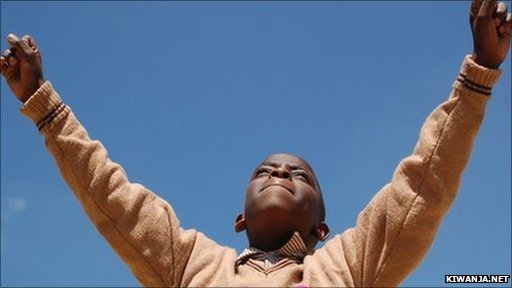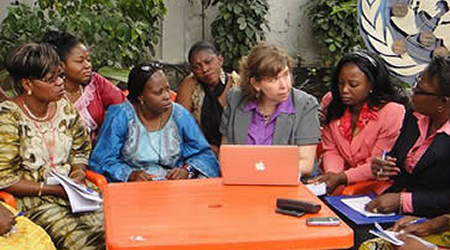
Photo Credit: Penn State Extension
It is over 10 years now that the Commonwealth of Learning Media Empowerment (COLME) program hit the media with the headline “Agriculture Goes High Tech With Digital Video”. This came up as a result of the success of their pilot project that used digital technology to produce farm instructional videos in Ghana and Jamaica for extension purposes.
Ever since, agriculture has gone up from one level of “high tech” to another where we now use thousands of “apps” for agriculture, even in the remotest part of the world. But what is the progress made so far in the development and implementation of digital video technologies in agricultural extension over the years? Have we been circling around the same principle with different technologies over the years? Is there a room for improving the application of videos in agriculture? What are some of the similarities and differences between some of the models used or being used by the implementing agencies?
I believe the incorporation of high techs in agriculture is not just to “romanticize” it but to ensure the benefits of the users – mostly rural farmers who are disadvantaged by virtue of their location (see my previous post on “Rurality”). As a result, the premise for the COLME program at the time was based on a feasibility study conducted in Jamaica that showed that agricultural extension workers had access to training but the system of ‘disseminating’ the information to farmers was not effective or efficient. Ever since (late 2000), the use of videos in capturing and disseminating agricultural information has progressed with several improved models currently being used by farmers all over the world. These models could be classified into either using videos to transmit scientific knowledge and innovations to farmers or using videos to share practices and experiences between and among farmers.
Below are few models that worth mentioning as I reflect on the future of digital videos in agricultural research and extension:
1 – Commonwealth of Learning Media Empowerment (COLME) and Communication of Scientific Knowledge
Beginning from the COLME program, the use of digital video has improved extension services delivery over the traditional radio technology, which is use to support face-to-face information delivery to farmers. The COLME program acknowledged that using videos instead of radio could improve the efficiency and effectiveness of agricultural extension delivery. In collaboration with the Rural Agricultural Development Authority (RADA) in Jamaica, COLME assisted agricultural extension workers to use low-cost video production tools to develop training materials on good farm practices. Improvement is seen in visual content for demonstration to farmers, step-by-step training methods watched by farmers, and increasing access to content by illiterate farmers who could not read.
This was an excellent innovation at the time with emphasis on scientists using video technology to improve the delivery of their innovations to farmers. Scientists capturing their own demonstrations on videos and sharing them with farmers resulted in improved farm management practices by the farmers who were invloved.
2 – PROLINNOVA (PROmoting Local INNOVAtion) and Sharing of Local Knowledge and Innovations
Around the same time as the COLME program, PROLINNOVA an NGO-initiated multistakeholder program that promotes local innovation in ecologically oriented agriculture and natural resource management (NRM) also started using videos to capture and document farmers’ local knowledge and innovations. With the emphasis on farmers’ local innovations, PROLINNOVA went a step ahead of the COLME program to not only disseminate external content through videos but also utilize internal innovations. Approaches such as Farmer Led Documentation (FLD) and Participatory Innovation Development (PID) have been used extensively in the developing nations to demonstrate the effectiveness of user-led innovation for sustainable development, and the advantages in building strong farmer-extension-researcher partnerships.
The strength of PROLINNOVA in the use of digital videos for agricultural improvement could be attributed to their use of local knowledge and innovations of the people. This I believe is key for the future use of videos in agriculture. When local farmers from one community watch farm management practices of their colleagues from another community, it gives them a better understanding of the process than the traditional extension service delivery.
3 – Agro-Insight and the use of Socio-Technical System in Video Production
The work of Agro-Insight in the use of digital videos for improving extension services delivery cannot be overlooked. As a dynamic enterprise that merges expertise from science, communication and arts to support sustainable agriculture and equitable trade, Agro-Insight works closely with institutions and organizations to enhance their impact on rural communities through reflective research and effective video, radio and print material production. In addition to the emphasis on local farmers activities, Agro-Insight aims at contributing to a more sustainable agriculture and trade by enhancing reflection and learning among farmers, the R&D community, agribusinesses and civil society.
The combination of R&D with local practices through videos is a plus with the Agro-Insight innovation. Rural farmers do believe in their local innovations but understanding these innovations through research, and seeking farmers view on the potency of these innovations in the current technological age is needed.
4 – Video Viewing Club (VVC) and Farmer Involvement in Production and Analysis of Videos
Another specific project that is using videos to improve agricultural production is the Video Viewing Club (VVC) of the Sustainable Tree Crop Production (STCP) program of the International Institute of Tropical Agriculture (IITA). Using farmer training activities such as Video Viewing Clubs, local farmers are trained to collect data on their own farming activities, write scripts, edit and produce short videos/clips that cover a number of farm practices. The project, which started mainly within the cocoa sector, is expected to cover some other food crops such as cassava in the near future. Cocoa farmers in clubs are trained to document farm management practices in topics such pruning, black pod disease control, harvesting/pod breaking and fermentation techniques. These clips are viewed with experts and discussions take place for further explanation of issues arising from the videos.
VVC innovation is also unique by putting local farmers into small groups and training them to be in charge of the research process – observing issues in their communities, gathering data through interviews with their colleagues, writing scripts and producing videos. The most positive part of this innovation, I think, is the discussion that takes place between the club members, other community members and the scientists during the viewing of the clips. This will lead to greater understanding of the process and activities that have been documented.
5 – Digital Green and the Combination of Science and Technology in Videos
Digital Green is a newer approach to the use of digital videos in agricultural extension services delivery. It emphasizes a socio-technical system approach by combining the technologies with existing people-based extension systems to amplify their effectiveness. It taps into local social networks to connect farmers with experts to minimize the distance between teacher and learner. Videos are produced by farmers; of farmers; and for farmers across the field locations. The video production process is participatory, human-mediated instruction model for video dissemination and training, a hardware and software technology platform for exchanging data in areas with limited Internet and electrical grid connectivity, and an iterative model to progressively better address the needs and interests of the community with analytical tools and interactive phone-based feedback channels.
Digital Green is also utilizing farmers as a key resource in the documentation process. Also acknowledged by this innovation is the importance of the social processes rather than the technology. If the technology is to have impact, the social processes need to be well organized.
So what is the future of Digital Videos in Agricultural Research and Extension?
I believe there are a great number of projects and programs out there that are currently using videos in agricultural extension service delivery. These other programs as well as those mentioned above do all have one common goal – to improve knowledge sharing through digital technologies for increased agricultural productivity. These approaches are seen in agricultural experts developing scientific methods of farming through videos for farmers’ use; training farmers to use videos to document their farm management practices (not necessarily their local knowledge and innovations); and then training farmers to document their own local knowledge and innovations that could be shared with other farmers.
In addition to the use of videos in extension services delivery, videos are also being used in agricultural research work. The Power of Video in Research by ICT-KM at CGIAR argue that videos and the Internet have revolutionized the way in which an increasing number of scientists are now communicating ideas and the results of their research. There are easier ways now to use videos to record scientific results and then use them in farmer education. Videos are being used to efficiently convey large amounts of information and depict scientific procedures that would otherwise require pages upon pages of written text to achieve the same level of understanding; show things that take place over time as if they are face-to-face events; raise awareness of issues; document science and share new scientific methodologies that can help build capacity; and generate new applications and innovation.













































